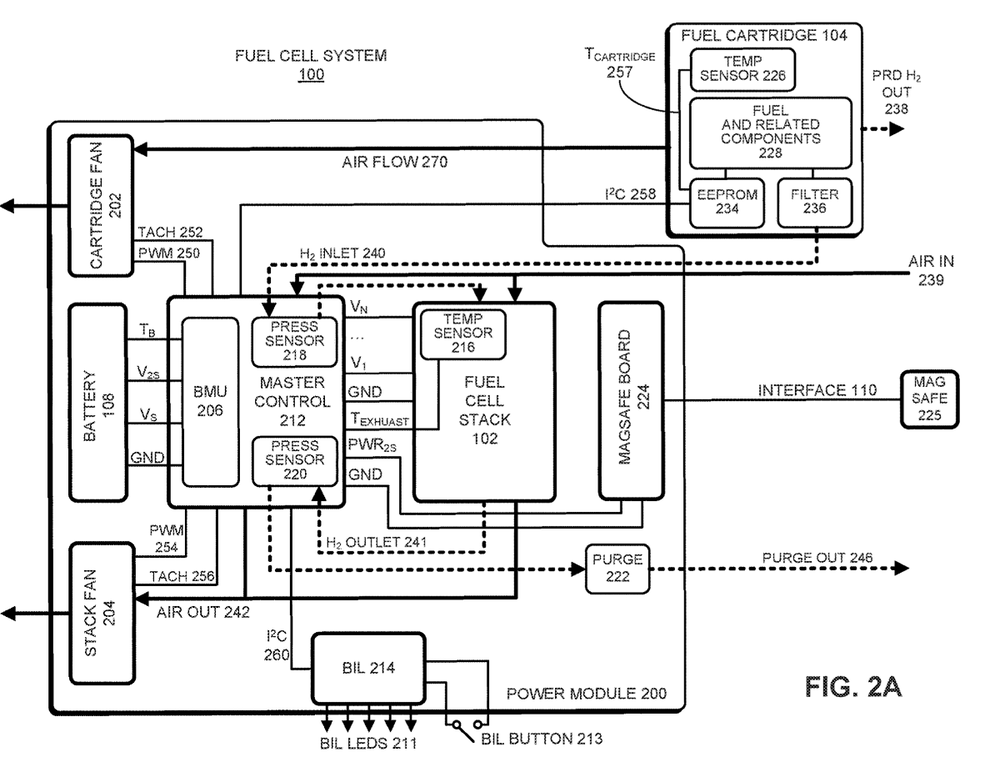Future Mac laptops and iPads could be powered by hydrogen fuel cells as evidenced by a newly granted Apple patent (number 10,790,561) dubbed “portable computing device for external fuel cell control.”
In the patent filing, Apple notes that the continuing reliance of the U.S. on fossil fuels has forced our government” to maintain complicated political and military relationships with unstable governments in the Middle East, and has also exposed our coastlines and our citizens to the associated hazards of offshore drilling.” These problems have led to an increasing awareness and desire on the part of consumers to promote and use renewable energy sources.

For example, the Electronic Product Environmental Assessment Tool (EPEAT) is presently used to produce data that helps consumers evaluate the environmental friendliness of electronic products. Moreover, the EPEAT score for an electronic product can be increased by providing a renewable energy source for the product.
Apple says that, as a consequence of this increased consumer awareness, electronics manufacturers have become very interested in developing renewable energy sources for their products, and they have been exploring a number of promising renewable energy sources such as hydrogen fuel cells. Hydrogen fuel cells have a number of advantages.
Such fuel cells and associated fuels can potentially achieve high volumetric and gravimetric energy densities, which can potentially enable continued operation of portable electronic devices for days or even weeks without refueling. However, it is extremely challenging to design hydrogen fuel cell systems which are sufficiently portable and cost-effective to be used with portable electronic devices. Apple wants to overcome this problem.
Here’s the summary of the invention: “This fuel cell system includes a fuel cell stack which converts fuel into electrical power. It also includes a fuel source for the fuel cell stack and a controller which controls operation of the fuel cell system. The fuel system also includes an interface to the portable computing device, wherein the interface comprises a power link that provides power to the portable computing device, and a bidirectional communication link that provides bidirectional communication between the portable computing device and the controller for the fuel cell system.”
